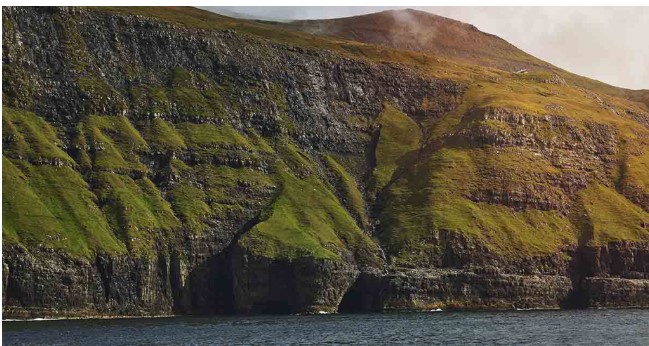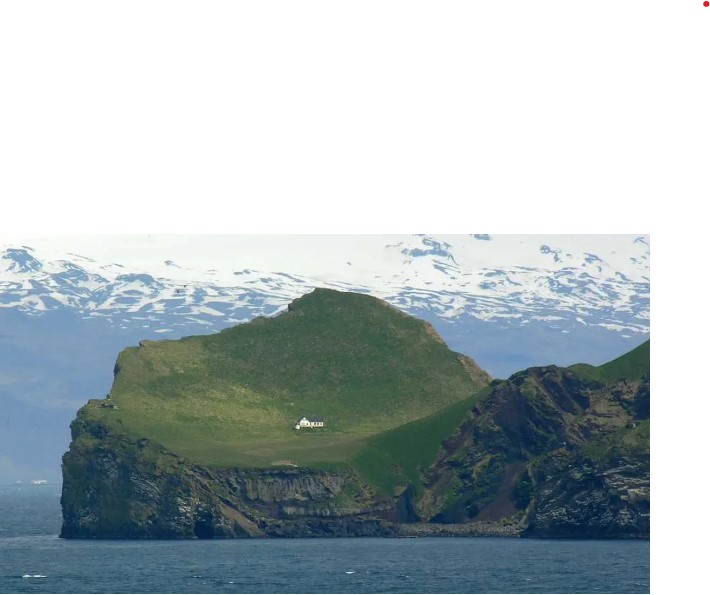Worlds Loneliest House
In the Vestmannaeyjar archipelago, just off the southern coast of Iceland, there’s a tiny island named Elliðaey. On this remote isle, a solitary white house stands, seemingly forsaken by civilization. The sight of this enigmatic dwelling, often referred to as the “world’s loneliest house,” has sparked an array of speculations and rumors.1 This white structure, stark against the verdant landscape, has intrigued global audiences and led to the proliferation of diverse theories regarding its purpose and occupants.

One of the widely circulated conjectures claims that a billionaire constructed the house as a sanctuary to take refuge in the event of a zombie apocalypse.2 Another narrative posits that a solitary religious hermit resides in the house. There were even claims that the house was a gift to the Icelandic singer Björk by the Icelandic government, a theory that was subsequently debunked. Some skeptics went as far as to claim that the house did not exist at all and was merely a product of image manipulation before the photographs were disseminated online.
Adding to the mystique, the history of Elliðaey Island itself is enveloped in the mists of time. About 300 years ago, the island was inhabited by five families who lived a simple life, relying on fishing, hunting puffins, and raising cattle. By the 1930s, however, the island was abandoned, and the last of its residents departed for mainland Iceland, leaving just the world’s loneliest house there, alone.
Less Exciting Than You Think
The reality, however, is less fanciful than the captivating myths. The solitary structure, often mistaken for a house, is actually a lodge built in 1953 by the Elliðaey Hunting Association. Contrary to the idea of a lavish hideaway, the lodge serves as a base for hunting puffins, which are abundant on the island. The ‘world’s loneliest house” is devoid of modern amenities like electricity, running water, and indoor plumbing. However, it does have a sauna, which utilizes a natural rainwater collection system.
While there is another structure on the island, it is much older and is now relegated to storage. The island itself is recognized as a nature reserve and protected area, and tour companies now offer day trips to Elliðaey for those with an adventurous spirit who wish to explore its natural environment.
Digging deeper, the lodge was constructed to support the activities of the hunters who were drawn to the island’s teeming bird populations. The world’s loneliest house was once a “rocky islet” that boasted Iceland’s largest gannet colony with an estimated 15,000 birds, including puffins, gannets, petrels, and razorbills.
However, photographs and information from recent times suggest that the lodge may no longer be in use for hunting. It is speculated that tourism might be the primary purpose of the lodge now, although this is yet to be definitively confirmed.

A Common Misconception
Another fascinating facet is the case of mistaken identity involving two different Icelandic islands named Elliðaey. The one in Vestmannaeyjar, home to the “world’s loneliest house”, should not be confused with another, located in Breiðafjörður, west of Iceland. In the year 2000, the Icelandic government granted singer Björk the exclusive use of the latter island, in recognition of her contributions to the country. However, Björk said no to the offer in 2004, concerned that her home would turn into a tourist spot.
As for the inside of the lodge in Vestmannaeyjar, video footage from 2017 reveals a two-story building with beds, couches, tables, and chairs, as well as a stove, grill, refrigerator, radio, candles, and binoculars. While there is no electricity supply, it is likely powered by propane gas, and rainwater is collected for use.
In conclusion, the “world’s loneliest house” is, in fact, a lodge built for useful purposes. Though the building has been shrouded in mystery and the stuff of legends, the truth is less dark and more focused on nature and simple life. This, however, does not detract from the stark beauty and peace of Elliðaey, which continues to captivate the imaginations of people around the world.


